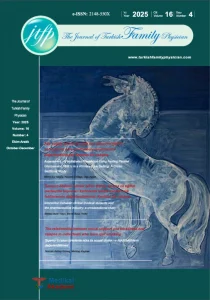Medical Pluralism
All complex large-scale societies contain multiple health systems, and this phenomenon is considered medical pluralism. As societies become more complex, multiple health systems appear to have emerged with the rise of the division of labor and the division and division of professions that provide professional treatment. Today, the dominant medical system in almost all countries is biomedicine. Some countries have adopted more than one medical system as a formal health policy, including traditional medical practice. Regardless of the formal acceptance, individuals also resort to non-biomedical methods for various reasons and use different systems at the same time.
The World Health Organization conceptualizes the treatment systems and their applications outside biomedicine with the terms Traditional medicine- “A collection of knowledge, skills and practices based on theories, beliefs and experiences that are specific to different cultures, whether explicit or not, used in the prevention, diagnosis, treatment or treatment of physical and mental diseases” and Complementary medicine or Alternative medicine- “refer to a broad range of health care practices that are not part of that country’s own tradition or traditional medicine and are not fully integrated into the dominant health system”. While some of the applications within these concepts are traditional for a certain culture, some of them are relatively new ones that have emerged during industrialization and the examples absorbed by the major regional medical systems create old and traditional perception. In today’s highly mobile and interactive world, different treatment systems, including biomedicine, are influenced by each other, the elements are recruited and the boundaries between them blur. In today’s highly mobile and interactive world, different treatment systems, including biomedicine, are influenced by each other, the elements are recruited and the boundaries between them blur. In this review, it is aimed to discuss whether medical pluralism observed in all complex societies is going to a hybrid system or whether other treatment applications other than biomedicine begin to dissolve in biomedicine or are modernized and reproduced within the system.
References
- Aytaç Ö, Kurtdaş M Ç. Sağlık-Hastalığın toplumsal kökenleri ve sağlık sosyolojisi. Fırat Üniversitesi Sosyal Bilimler Dergisi 2015; 25(1):231-50.
- Barfield, T. Medikal Anthropology. In “The Dictionary of Anthropology”. (Ed.) T. Barfield. Malden, Blackwell Publishing ltd. 2006:318-9.
- Ember CR, Ember M. Critical Medikal Anthropology. In “Encyclopedia of Medikal Anthropology”. (eds) Ember CR, & Ember M. NewYork, Kluwer Academic/Plenum Publishers. 2004:23-31.
- Baer HA, Singer M. Biyomedikal hegemony in the context of medical pluralism. In “ Medikal Anthropology and the World System”. (eds) Baer HA, Singer M, Susser I. London, Library of Congress Catalogue Card Number, 20003052887. 2003:329-49.
- Elmacı N. Sağlık Antropolojisi.” Diyarbakır Örnekleri” içinde. Ankara, Siyasal Kitabevi. 2013:1-30.
- Lock M, Nguyen VK. “Anthropologies of Biyomedicine”. Oxford, A John Wiley & Sons Ltd. Publication. 2010:60-5.
- Winkelman M. (2009). Ethnomedikal Sysyytems and Healt Care Sectors. In “Culture and Health: Applying Medikal Anthropology”. (ed) M. Winkelman. San Francisco, Jossey-Bass A Wiley Imprint. 2009:163-99.
- Eisenberg D, Davis RB, Ettner SL, Appel S, Wilkey S, Van Rompay M, Kessler RC. Trends in Alternative Medicine Use in the United States, 1990-1997. JAMA 1998; 280(18): 1569-75.
- Eisenberg D. Complementary and integratıve medikal therapies: Current status and future trends. In “The Richard and Hinda Rosenthal Lectures 2001: Exploring Complementary and Alternative Medicine”. Washington (DC), National Academies Press (US). 2003:1-25. https://www.ncbi.nlm.nih.gov/books/NBK221197/
- Moshabela M, Bukenya D, Darong G, et al. Traditional healers, faith healers and medikal practitioners: the contribution of medikal pluralism to bottlenecks along the cascade of care for HIV/AIDS in Eastern and Southern Africa. Sex Transm Infect 2017;93(Suppl 3):e052974. doi:10.1136/sextrans-2016-052974.
- Moshabela M, Pronyk P, Williams N, Schneider H, Lurie M. Patterns and implications of medikal pluralism among HIV/AIDS patients in rural South Africa. AIDS Behav. 2011;15(4):842–52. doi:10.1007/s10461-010-9747-3.
- Norn SKP. Cardiac glycosides: From ancient history through Withering’s foxglove to endogeneous cardiac glycosides. Dan Medicinhist Arbog 2004:119-32.
- National Center of Complementary and Alternative Medicine. Complementary, Alternative, or Integrative Health: What’s In a Name? https://nccih.nih.gov/health/integrative-health adresinden 09.06.2019 tarihinde erişilmiştir.
- WHO. Traditional medicine strategy: 2014-2023. https://www.who.int/medicines/publications/traditional/ trm_strategy14_23/en/adresinden 09.06.2019 tarihinde erişilmiştir.
- Leslie, C. Medical pluralism in world perspective. Social Sciences and Medicine 1980; 14(4):191-5.
- Çağlayaner H. “Türkiye’de Sağlığın Çağdaşlaşması”. İstanbul, Deomed. 2014:69-79.
- Dole C. “Seküler Yaşam ve Şifacılık”. (çev.) Barış Cezar. 1.Baskı. İstanbul, Metis. 2012:18-9.
- Geleneksel ve Tamamlayıcı Tıp Uygulamaları Yönetmeliği. 27 Ekim 2014. http://www.resmigazete.gov.tr/ eskiler/2014/10/20141027-3.htm adresinden 09.06.2019 tarihinde erişilmiştir.
- Türk Standartları Enstitüsünün Türkiye Geleneksel ve Tamamlayıcı Tıp Enstitüsü. https://www.tuseb.gov.tr/ enstitu/getat/index.php adresinden 09.06.2019 tarihinde erişilmiştir.



